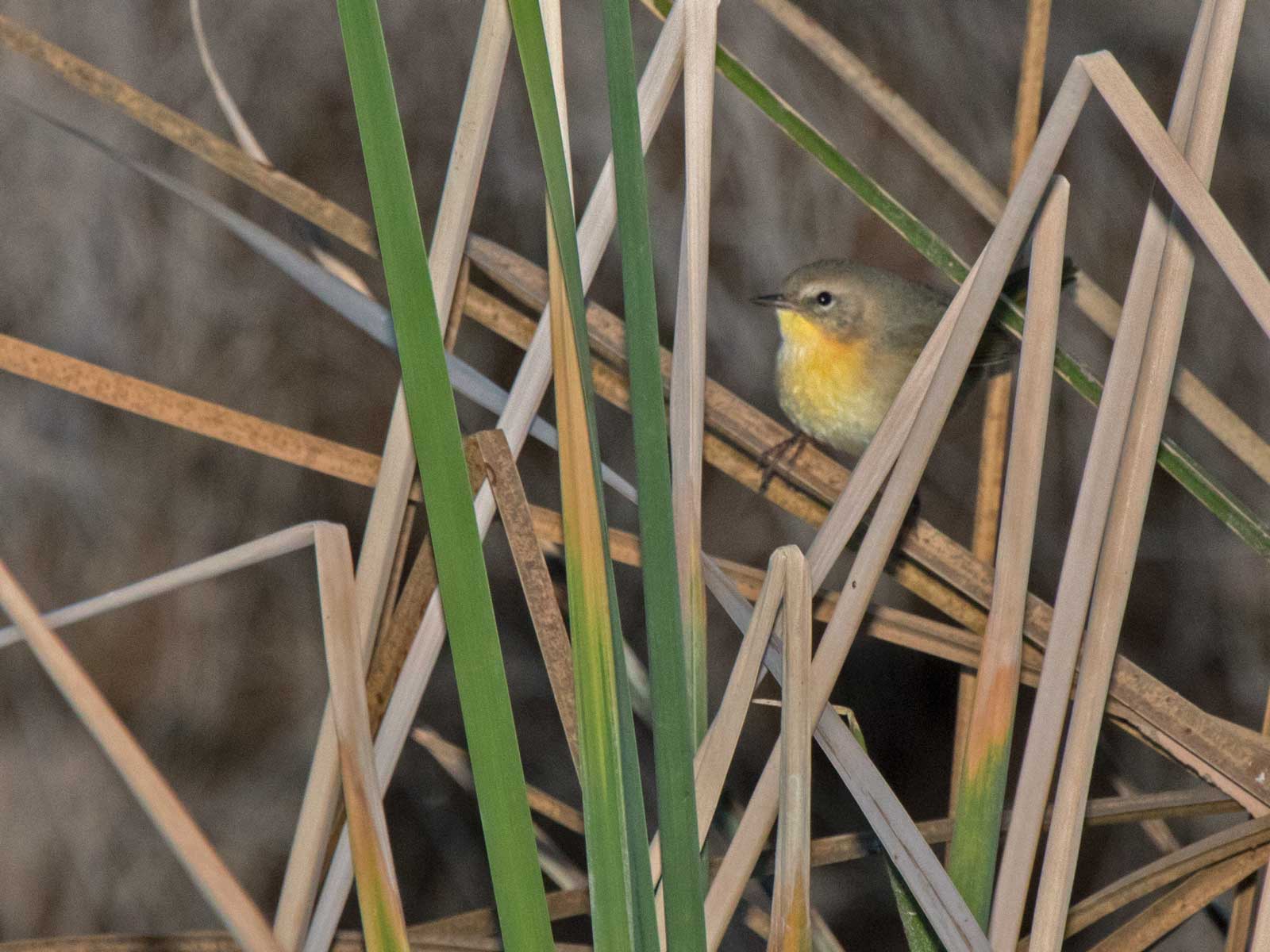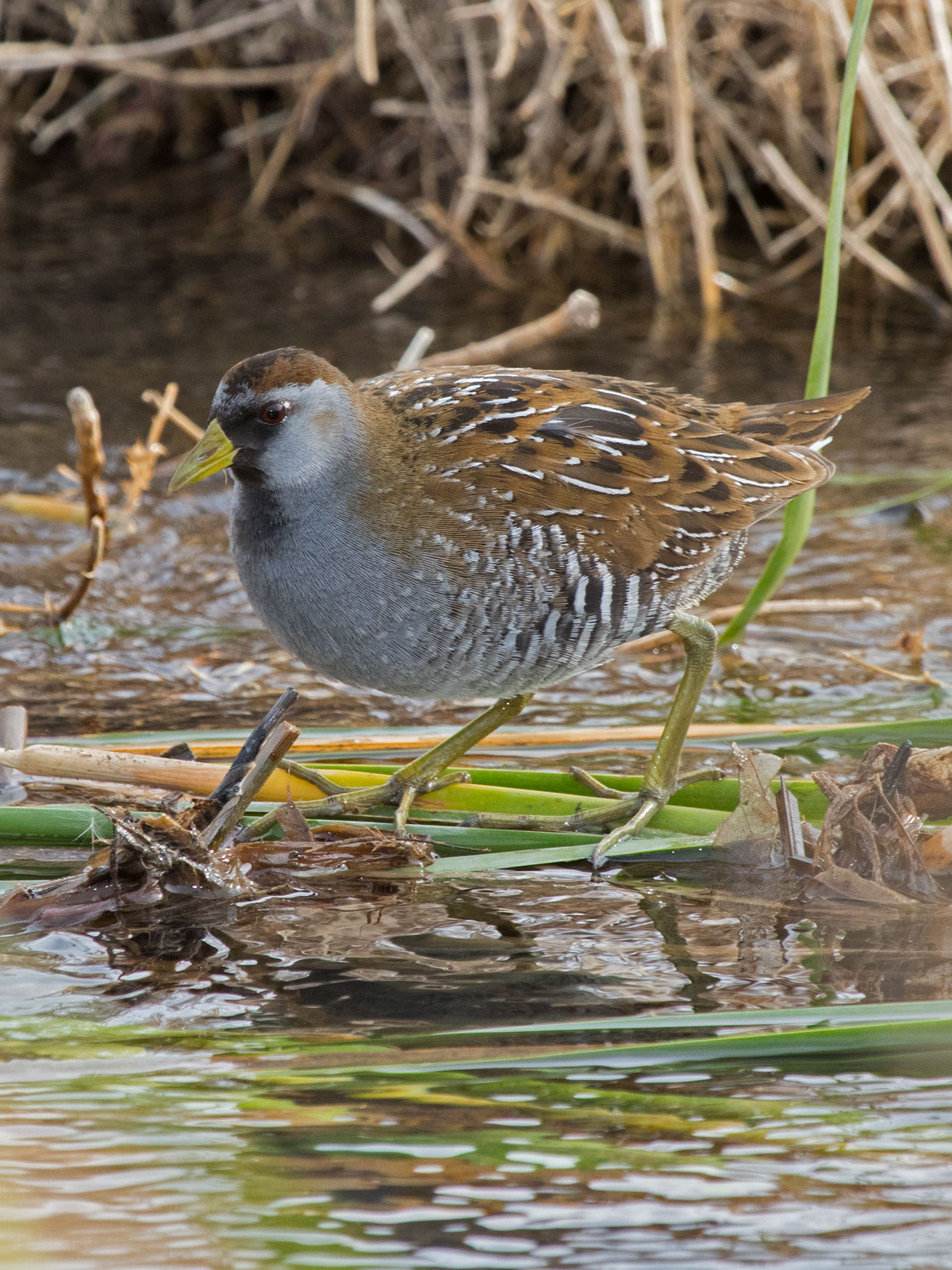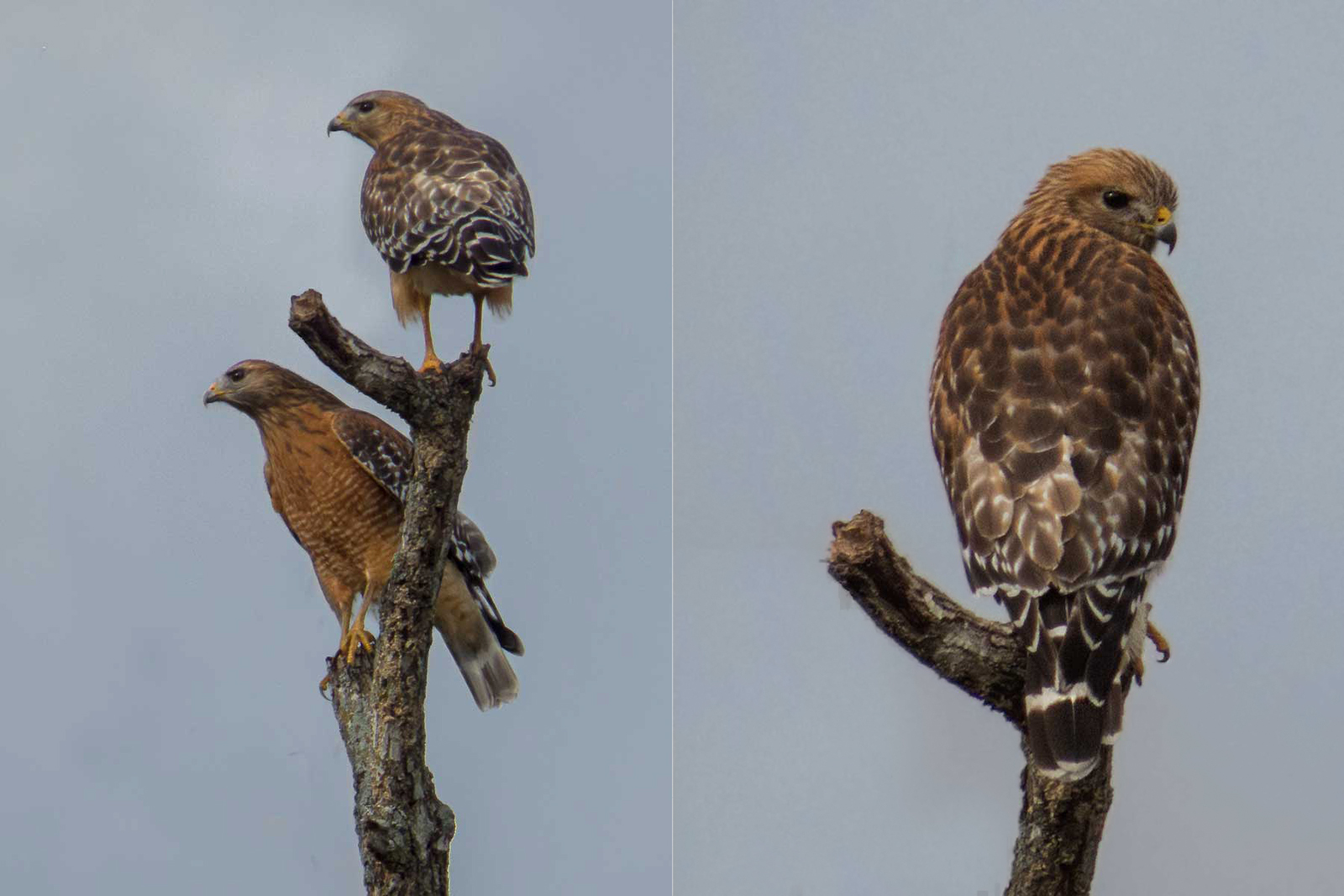Of the varied birds we observed today at Lake Balmorhea, the Western and Clark's Grebes have caused me some confusion. From my reading, these two species often intermix in flocks. However, it is not clear whether these two species interbreed successfully. The description of the Clark's Grebe in the
Sibley Guide to Birds suggest that hybrids are possible. On the other hand, the entry for this species in the
Cornell Lab of Ornithology, All About Birds website asserts that "Differences in face and bill color keep the two grebes from interbreeding." A
Flickr discussion group thread, though not scientifically based, argues for hybridization.
For my part, I was able to watch a family group very closely. Initially, I watched this adult and juvenile pair swimming together, along with another nearly identical juvenile not shown. The adult on the right has all of the characteristics of a Western Grebe: the dark surrounding the eye, the darker back, and the bill color. Although the plumage could still be that of a Clark's, as described by Sibley, the black lined yellow-olive bill with up-turned tip should mark this as a
Western Grebe.
The coloration of the juvenile, shown here in more detail, probably does not help. But oh, is it cute!
For a little more gratuitous cuteness, here is an unrelated juvenile paddling and squawking full steam as it chases after an adult. This sequence shows just how far back on the body the grebe's legs are attached as it kicks up a rooster tail of spray.
As I watched the first pair, a second adult swam into the little inlet. The juvenile gave a squawk of excitement and swam over to join the new adult and follow it around. This second adult, shown below, is unquestionably a
Clark's Grebe. It has the white surrounding the eye, the lighter back, and most importantly the straight yellow-orange bill.
My questions now are: Do juvenile grebes follow any adult around or are these the two parents? Is this a mixed-species pair? Do both adults care for the young? From our reading, the answer to the last question would be yes.














